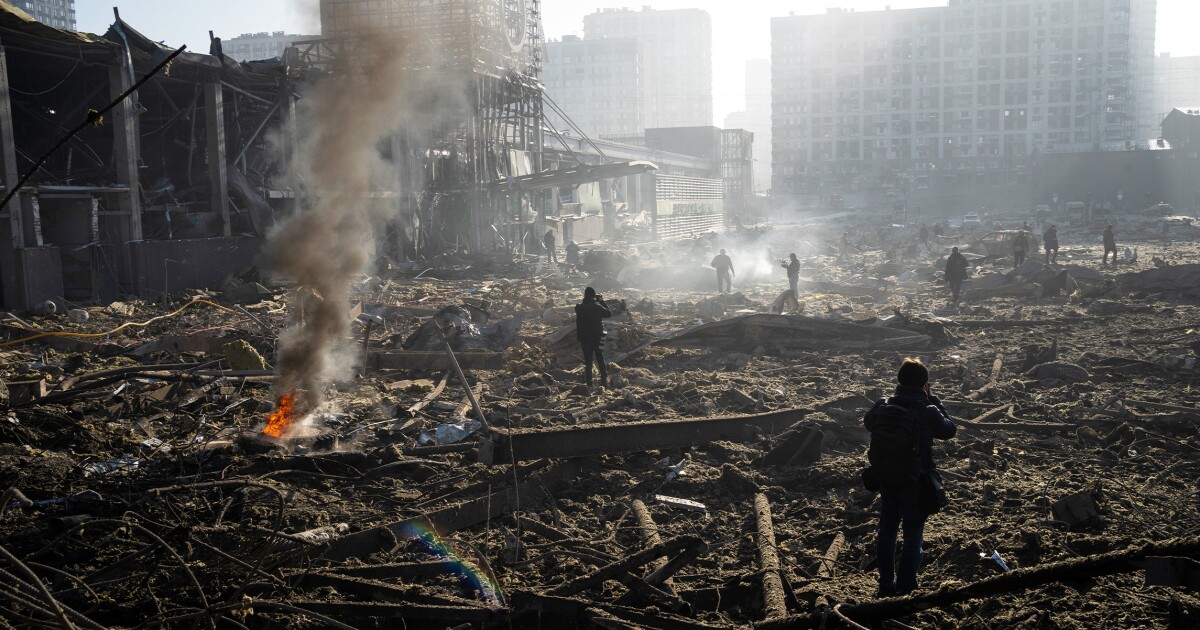

In the intelligence game, there’s a saying: “Tell me what you know, tell me what you think, and make damn clear which is which.”
On the heels of two embarrassingly bad calls, the U.S. intelligence community is trying to figure out a better way to assess one of the great intangibles of war: which side has the greater will to fight.
“Within 12 months, we missed the will to fight. We overestimated the Afghans’ will to fight, underestimated the Ukrainians’ will to fight,” said Sen. Angus King (I-ME) at a hearing of the Senate Armed Services Committee in May. “I hope that the intelligence community is doing some soul-searching about how to better get a handle on that question.”
Indeed, they are.
After Congress was briefed in February that Kyiv was going to fall in three or four days and the war in Ukraine would last two weeks, Avril Haines, the U.S. director of national intelligence, convened a working group under the auspices of the National Intelligence Council to try to figure out a better way to gauge “will to fight.”
That followed another intelligence debacle, in which Congress was told last year that the U.S-backed government in Afghanistan would hold on for at least six months to a year after U.S. troops departed. Kabul fell to the Taliban in less than two weeks.
In both cases, the U.S. intelligence agencies put far too much weight on the military capabilities of each side while giving short shrift to the much-harder-to-assess factor of motivation of the front-line troops. On paper, Ukraine was clearly outgunned and outnumbered by the 150,000-strong Russian invasion force that was massed against it. Just as the Afghan government forces were, on paper, superior in troops, training, and weaponry.
“The Afghan troops have 300,000 well-equipped — as well-equipped as any army in the world — and an air force against something like 75,000 Taliban,” President Joe Biden said last summer when he defended his decision to pull all the U.S. troops out by September. In Afghanistan, the reduction of American forces that began during the Trump administration left the U.S. without eyes and ears on the front lines, so the extent that the Taliban had cut deals with local forces was missed, and the resulting mass surrender of Afghan fighters was a shock.
In Ukraine, where U.S. and NATO trainers had been working with the Ukrainians for eight years, the proficiency and motivation of Ukrainian forces should have been more obvious, but it was also missed, or more accurately, discounted.
The U.S. has a long history of misjudging the enemy while placing too much faith in troops trained and equipped by the U.S. military. It was true in Vietnam, and more recently, it was true in Iraq, where, in 2014, the Islamic State conquered a large swath of the country, meeting little resistance from the much larger U.S.-trained Iraqi army. In the northern Iraqi city of Mosul and in the central city of Ramadi, Iraqi troops spooked by ISIS just dropped their weapons and ran.
“What apparently happened was that the Iraqi forces just showed no will to fight,” said Defense Secretary Ash Carter after the fall of Ramadi in 2015. “They were not outnumbered. In fact, they vastly outnumbered the opposing force, and yet, they failed to fight.”
Counting the number of tanks, planes, ships, and troops arrayed against each other is a logical starting point for predicting the outcome of war, and it was easier than counting things that can’t be seen. And when it came to Ukraine, the U.S. intelligence community was still smarting from its overly rosy assessment in Afghanistan, so it’s understandable analysts would be wary of going out on a limb to predict the underdog might prevail. It would be flouting conventional wisdom
But the missed call had consequences. Because President Joe Biden and Congress were told Ukraine faced almost-certain defeat, there was an initial hesitancy to send Ukraine advanced U.S. weaponry for fear it would just fall into the hands of the Russians, just as $80 billion worth of equipment ended up with the Taliban after Kabul fell.
“I think there was a major issue we missed that had a significant influence on how this unfolded,” said King. “Had we had better handle on the prediction, we could have done more to assist the Ukrainians earlier.”
The short answer as to why the U.S. is so bad at assessing “will to fight” is that it’s just not easy to do. “We have never been able to accurately gauge will to fight,” said retired Air Force Lt. Gen. James Clapper, director of national intelligence under Obama. “I mean, if we could have figured this out, we would have done this years ago.”
Clapper told the Carnegie Connects podcast this month that he has engaged with a working group convened by Haines that’s trying to come up with a more accurate way of forecasting will to fight and that “they’re not having a lot of success.” “It is extremely hard to assess, particularly in advance, just how a military formation is going to perform, whether at the individual soldier level, or to add to the complexities of a unit and the dynamics of a unit fighting in combat,” he said.
What Clapper said his five-plus decades in the intelligence business have taught him is that a little more humility is in order. “In my view, when the intelligence community is asked to make assessments like this, it should heavily caveat what it’s saying,” he said. “There are certain characteristics and attributes of opposing militaries that you can describe, but the bottom line should be, when combat is joined, all bets are off.”
Clapper cited another well-worn intelligence saying — about the difference between secrets and mysteries, secrets being empirical facts that can be divined, and mysteries being things that aren’t knowable. Will to fight, he said, falls under the rubric of mysteries.
“I think too often, or sometimes, at least, the intelligence community is held to the same exacting standards for divining both mysteries and secrets,” Clapper said. “The pitfall here is when the intelligence community is pressured into making pronouncements like this, it ought to be very cautious, very wary, of misrepresenting what’s going to happen because it’s just my experience has been we have been singularly unsuccessful at predicting accurately and consistently will to fight.”
Jamie McIntyre is the Washington Examiner’s senior writer on defense and national security. His morning newsletter, “Jamie McIntyre’s Daily on Defense,” is free and available by email subscription at dailyondefense.com.





